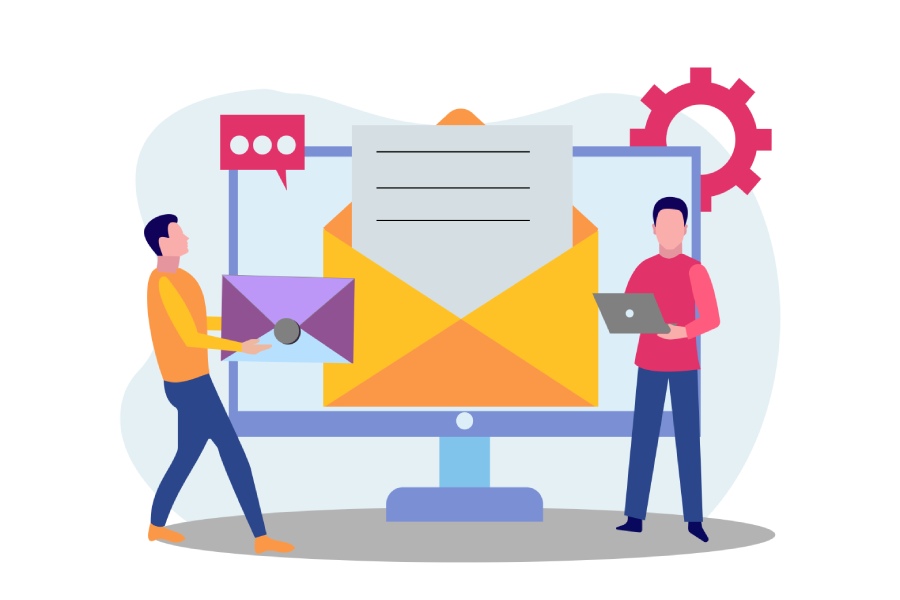Your carefully crafted marketing campaign just launched, complete with compelling subject lines and perfectly timed send schedules. Yet three days later, your open rates are disappointingly low, and customer responses are practically nonexistent. The culprit? Your emails are likely sitting in spam folders instead of reaching their intended inboxes.
Email deliverability remains one of the most challenging aspects of digital marketing, especially when over 173 billion of the 347 billion daily emails sent globally are classified as spam. With legitimate businesses often struggling to maintain consistent inbox placement rates, even the most engaging content becomes worthless when it never reaches your audience.
Understanding the mechanics behind email delivery can transform your communication strategy from hit-or-miss to reliably effective. Let’s explore the strategies that separate successful email campaigns from those that disappear into the digital void.

The Foundation: Authentication Protocols
Email authentication serves as your digital passport, proving to receiving servers that your messages are legitimate. Without proper authentication, even your most important communications can trigger spam filters and damage your sender reputation.
SPF (Sender Policy Framework) acts as your first line of defense against spoofing attempts. This DNS record specifies which servers are authorized to send emails on your behalf. When properly configured, SPF tells receiving mail servers exactly which IP addresses should be trusted when they see emails from your domain.
Consider a scenario where your company uses multiple email services—perhaps Google Workspace for general communications, Mailchimp for newsletters, and Salesforce for automated customer outreach. Each service needs explicit authorization in your SPF record, or their emails risk being flagged as suspicious.
DKIM (DomainKeys Identified Mail) adds a digital signature to your outgoing messages, creating a cryptographic fingerprint that proves authenticity. This signature remains intact during transmission, allowing receiving servers to verify that your email hasn’t been tampered with along the way.
DMARC (Domain-based Message Authentication, Reporting, and Conformance) ties everything together by providing explicit instructions on how to handle emails that fail authentication checks. More importantly, DMARC gives you visibility into who’s sending emails using your domain name, helping you identify potential security threats.
According to recent industry data, domains with properly configured DMARC policies see up to 90% fewer phishing attempts targeting their brand. This protection extends beyond just preventing abuse—it also signals to major email providers that you’re serious about email security.

Reputation Management: Your Digital Credit Score
Your sender reputation functions like a credit score for email delivery. Internet Service Providers (ISPs) continuously monitor your sending behavior, tracking metrics like bounce rates, spam complaints, and engagement levels to determine whether your emails deserve inbox placement.
Maintaining a clean email list represents one of the most effective ways to protect your reputation. Regular list hygiene involves removing addresses that consistently bounce, identifying subscribers who never engage with your content, and implementing double opt-in processes for new subscribers.
Hard bounces—emails that permanently fail to deliver due to invalid addresses—can quickly damage your reputation score. A bounce rate above 2% sends warning signals to ISPs, while rates above 5% can trigger immediate delivery problems. Most email service providers automatically suppress hard bounces, but manually reviewing these failures helps identify potential data quality issues.
Spam complaints pose an even greater threat to deliverability. Major ISPs typically flag senders with complaint rates above 0.1% as potentially problematic. One effective strategy involves including clear unsubscribe links in every email and honoring removal requests immediately. Making it easy for recipients to opt out prevents them from marking your emails as spam instead.
Technical Infrastructure Optimization
Your sending infrastructure plays a crucial role in deliverability success. Dedicated IP addresses provide more control over your reputation but require consistent volume to maintain warmth. Shared IPs work well for smaller senders but mean your reputation depends partly on other users’ behavior.
IP warming becomes essential when launching new sending addresses or significantly increasing email volume. This process involves gradually increasing send volumes over several weeks, allowing ISPs to establish trust in your sending patterns. Companies implementing the best cold email outreach software often leverage pre-warmed IP addresses and dedicated infrastructure to ensure optimal deliverability from day one. Rushing this process by immediately sending to large lists often triggers automatic filtering.
DNS configuration extends beyond authentication records to include proper reverse DNS (PTR) setup. Your sending IP should have a PTR record that resolves to a domain you control, preferably matching your email domain. This technical detail might seem minor, but many spam filters check for consistent DNS configuration.
Content filtering algorithms have become increasingly sophisticated, analyzing everything from subject line construction to image-to-text ratios. Avoiding spam trigger words like “free,” “urgent,” or “limited time” helps, but context matters more than individual terms. A well-crafted subject line that accurately represents your email content typically performs better than clever wordplay designed to circumvent filters.

Engagement-Driven Strategies
Modern deliverability relies heavily on recipient engagement signals. ISPs monitor how subscribers interact with your emails, using metrics like open rates, click-through rates, and time spent reading to inform delivery decisions.
Segmentation allows you to send more relevant content to specific subscriber groups, naturally improving engagement rates. Rather than broadcasting identical messages to your entire list, consider creating segments based on purchase history, geographic location, or engagement patterns.
Send time optimization can significantly impact engagement levels. While general best practices suggest Tuesday through Thursday mornings, your audience might behave differently. With 82% of workers opening emails outside of work hours and 33% checking their inbox hourly or more often, testing different send times and monitoring engagement patterns helps identify optimal delivery windows for your specific subscribers..
Re-engagement campaigns help identify subscribers who’ve lost interest in your content. These targeted messages attempt to reactivate dormant users while identifying addresses that should be removed from active campaigns. Continuing to send to consistently unengaged subscribers hurts your overall engagement metrics and reputation.
Monitoring and Continuous Improvement
Deliverability optimization requires ongoing attention rather than a one-time setup. Regular monitoring of key metrics helps identify potential issues before they severely impact your campaigns.
Delivery rates, open rates, and spam complaint rates provide the foundation for deliverability analysis. However, more advanced metrics like inbox placement rates—the percentage of emails actually reaching the inbox rather than landing in spam folders—offer deeper insights into your true delivery performance.

Many organizations discover deliverability issues only after significant damage has occurred. Implementing monitoring tools that track your sender reputation across major ISPs provides early warning systems for potential problems.
Working with email service providers that offer detailed deliverability reporting and support can make the difference between success and failure. Look for providers that offer dedicated IP options, robust authentication support, and proactive reputation monitoring.
Email deliverability success requires balancing technical precision with strategic thinking. The companies that consistently achieve high inbox placement rates treat deliverability as an ongoing process rather than a one-time configuration task. By implementing these strategies systematically and monitoring results continuously, you can ensure your important messages consistently reach their intended recipients.
Remember that deliverability optimization is ultimately about building trust—with ISPs, with email providers, and most importantly, with your subscribers. When you earn that trust through consistent, valuable communications, your emails will find their way to the inbox where they belong.






